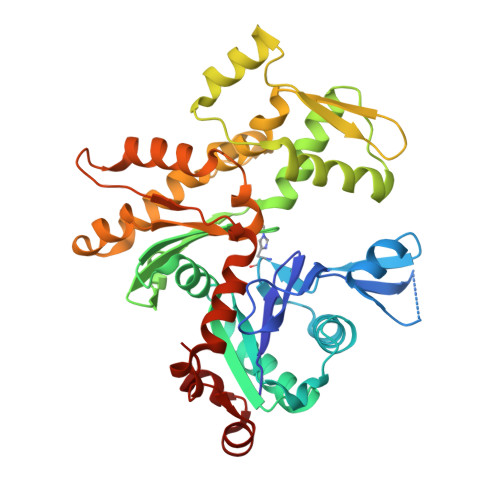Crystal structure of polymerization-competent actin
Klenchin, V.A., Khaitlina, S.Y., Rayment, I.(2006) J Mol Biol 362: 140-150
- PubMed: 16893553
- DOI: https://doi.org/10.1016/j.jmb.2006.07.001
- Primary Citation of Related Structures:
2HMP - PubMed Abstract:
All actin crystal structures reported to date represent actin complexed or chemically modified with molecules that prevent its polymerization. Actin cleaved with ECP32 protease at a single site between Gly42 and Val43 is virtually non-polymerizable in the Ca-ATP bound form but remains polymerization-competent in the Mg-bound form. Here, a crystal structure of the true uncomplexed ECP32-cleaved actin (ECP-actin) solved to 1.9 A resolution is reported. In contrast to the much more open conformation of the ECP-actin's nucleotide binding cleft in solution, the crystal structure of uncomplexed ECP-actin contains actin in a typical closed conformation similar to the complexed actin structures. This unambiguously demonstrates that the overall structure of monomeric actin is not significantly affected by a multitude of actin-binding proteins and toxins. The invariance of actin crystal structures suggests that the salt and precipitants necessary for crystallization stabilize actin in only one of its possible conformations. The asymmetric unit cell contains a new type of antiparallel actin dimer that may correspond to the "lower dimer" implicated in F-actin nucleation and branching. In addition, symmetry-related actin-actin contacts form a head to tail dimer that is strikingly similar to the longitudinal dimer predicted by the Holmes F-actin model, including a rotation of the monomers relative to each other not observed previously in actin crystal structures.
Organizational Affiliation:
Department of Biochemistry, University of Wisconsin, Madison, WI 53706, USA.




















